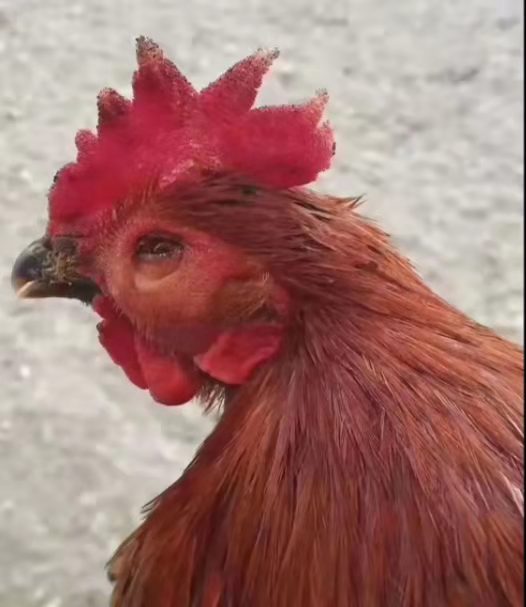Epidemiological characteristics of avian pulmonary virus:
Chickens and turkeys are the natural hosts of the disease, and pheasant, guinea fowl and quail may be infected. The virus is mainly transmitted by contact, and sick and recovered birds are the main source of infection. Contaminated water, feed, workers, utensils, movement of infected and recovered birds, etc., can also be transmitted. Airborne transmission is unproven, while vertical transmission may occur.
Clinical symptoms:
The clinical symptoms were related to feeding management, complications and other factors, showing great differences.
Clinical symptoms of infection in young chickens: trachea gongs, sneezing, runny nose, foamed conjunctivitis, swelling of infraorbital sinus and edema under neck, cough and head shaking in serious cases.
The clinical symptoms after infection of laying hens: the disease usually occurs in breeding hens and laying hens at the peak of egg production, and the egg production decreases by 5%-30%, sometimes by 70%, leading to prolapse of fallopian tubes in serious cases; Egg skin thin, coarse, egg hatching rate is reduced. The course of the disease is generally 10-12 days. Individual with cough and other respiratory symptoms. Also affects the quality of eggs, often with infectious bronchitis and e. coli mixed infection. In addition to the observation of head swelling phenomenon, but also the performance of specific neurological symptoms, in addition to some of the sick chickens show extreme depression and coma, most of the cases have brain disorders, manifestations include shaking head, torticollis, dyskinesia, instability of action and antinosis. Some chickens tilt their heads upward in a stargazing position. Sick chickens do not want to move, and some die because they do not eat.

he clinical symptoms of pachycephalic syndrome caused by pulmonary virus are as follows: the infection rate of broilers is up to 100% at 4 ~ 5 weeks of age, and the mortality rate varies from 1% to 20%. The first symptom of the disease is sneezing, one day conjunctiva flushing, lacrimal gland swelling, in the next 12 to 24 hours, the head began to appear subcutaneous edema, the first around the eyes, then developed to the head, and then affected mandibular tissue and meat. In the early stages, the chicken scratched its face with its PAWS, indicating local itching, followed by depression, reluctance to move, and decreased appetite. Infraorbital sinus enlargement, torticollis, ataxia, antinosis, respiratory symptoms are common.
Clinical symptoms of chickens viral balloon inflammation caused by lung virus: dyspnea, neck and mouth, cough, late secondary escherichia coli disease, increased mortality, and even lead to complete army collapse.
Prevention measures:
Feeding and management factors have a great impact on the infection and spread of this disease, such as: poor temperature control, high density, poor quality of bedding materials, sanitation standards, mixed breeding at different ages, disease infection after not recovered, etc., can lead to pulmonary virus infection. Debeaking or immunization during an unsafe period may increase the severity of pulmonary virus infection and increase mortality.
Strengthen the feeding management: strengthen the feeding management system seriously, out of the question implementation, and good biosafety measures are the key to prevent the introduction of pulmonary virus into farms.
Sanitary management measures: strengthen disinfection system, rotate the use of a variety of components of disinfectant, improve the sanitary conditions of the chicken house, reduce the density of space feeding, reduce the concentration of ammonia in the air, keep the chicken house good ventilation and other measures, to prevent or reduce the occurrence of disease and harm degree have a better effect.
Prevent bacterial secondary infection: antibiotics can be used to treat, while increasing vitamins and electrolytes.
Immunization: vaccines can be considered where there is vaccine immunization, according to the use of vaccines and the actual situation of their own chickens to develop a reasonable immunization program. Commercial chicks and broilers can consider live vaccine, layer can consider inactivated vaccine.
Post time: Jan-06-2022
